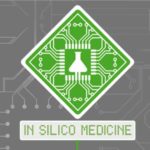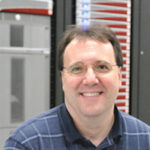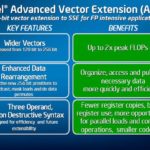Thanks to a grant from the National Science Foundation, Indiana University is developing an online service that will make it easier for university administrators to understand the importance of funding related to IT systems based at their institutions. The novel functionality will be available as a module for Open XDMoD (XD Metrics on Demand), which was developed by the University at Buffalo Center for Computational Research (CCR).
Archives for May 2016
Video: Whither Hard Disk Archives?
In this video from the 2016 MSST Conference, Dave Anderson from Seagate presents: Whither Hard Disk Archives? The talk was part of a panel discussion on Data-intensive Workflows.
Open-source vs. Proprietary – Keeping Ideology Out of the Equation
“One of the most recurrent themes is that of open-source vs. proprietary code. This debate is often painted with the idealistic open-source evangelists on one side, and the business-focused proprietary software advocates on the other. This is, of course, an unfair depiction of the topic. In reality, when debating open-source vs. proprietary, several issues tend to get conflated into one argument – open-source vs. closed-source, free vs. paid-for, restrictive vs flexible licensing, supported vs. unsupported, code quality, and so on.”
Insilico Applies Deep Learning to Drug Discovery
“The world of artificial intelligence is rapidly evolving and affecting every aspect of our daily life. And soon this progress will be felt in the pharmaceutical industry. We set up the Pharma.AI division to help pharmaceutical companies significantly accelerate their R&D and increase the number of approved drugs, but in the process we came up with over 800 strong hypotheses in oncology, cardiovascular, metabolic and CNS space and started basic validation. We are cautious about making strong statements, but if this approach works, it will uberize the pharmaceutical industry and generate unprecedented number of QALY,” said Alex Zhavoronkov, PhD, CEO of Insilico Medicine, Inc.
Vela Software Acquires Tecplot Fluid Dynamics Software
Today Vela Software announced that it has acquired Tecplot, a leading provider of fluid dynamics visualization and analysis software for engineers and scientists in the aerospace and oil & gas vertical markets.
Video: Developing, Configuring, Building, and Deploying HPC Software
“The process of developing HPC software requires consideration of issues in software design as well as practices that support the collaborative writing of well-structured code that is easy to maintain, extend, and support. This presentation will provide an overview of development environments and how to configure, build, and deploy HPC software using some of the tools that are frequently used in the community.”
Teratec Forum to Spotlight HPC and IoT
The TERATEC Forum 2016 will host a June 29 workshop on HPC, Connected Objects, and IoT Infrastructures. The full event takes place June 28-29 in Palaiseau, France. “Many innovations and new generation systems are based on connected things equipped with massive instrumentation and integrated within Industrial Internet of Things (IIoT) infrastructure. This workshop will be focused on new HPC software and infrastructure technologies integrated within these future global smart systems.”
Weather Prediction and the Scalability Challenge
“Weather prediction using high performance computing relies on having physically based models of the atmosphere that can deliver forecasts well in advance of the weather actually happening. ECMWF has embarked on a scalability program together with the NWP and climate modeling community in Europe. The talk will give an overview of the principles underlying numerical weather prediction as well as a description of the HPC related challenges that are facing the NWP and climate modeling communities today.”
Vectorization Steps
The process to vectorize application code is very important and can result in major performance improvements when coupled with vector hardware. In many cases, incremental work can mean a large payoff in terms of performance. “When applications that have successfully been implemented on supercomputers or have made use of SIMD instructions such as SSE or AVX are excellent candidates for a methodology to take advantage of modern vector capabilities in servers today.”
Ansys SeaHawk Brings Big Data Analytics to EDA
Ansys, a provider of engineering simulation technology, has announced the release of its SeaScape architecture to help engineers accelerate the optimization of designs using a combination of elastic computation, machine learning, big data analytics and simulation technology.













